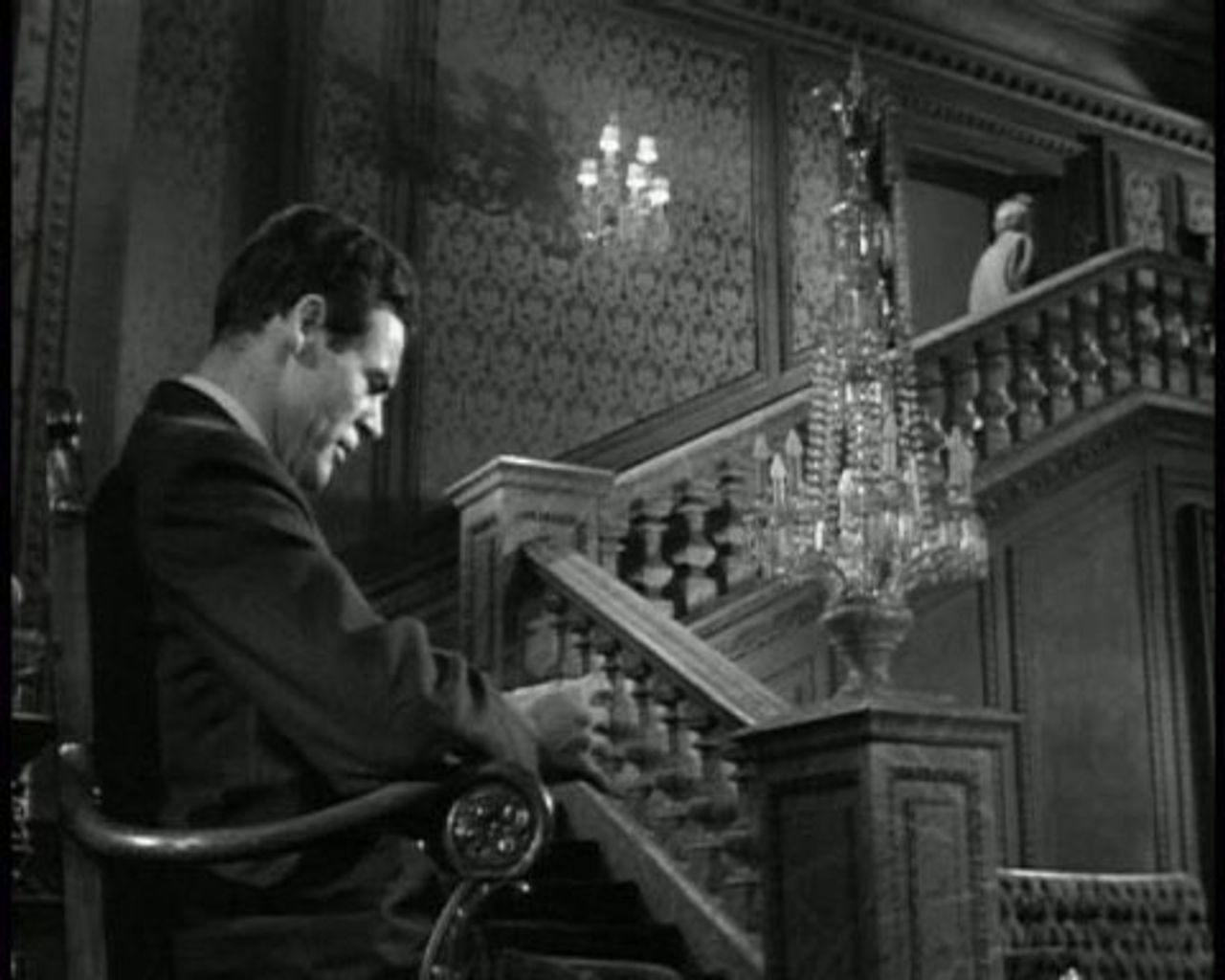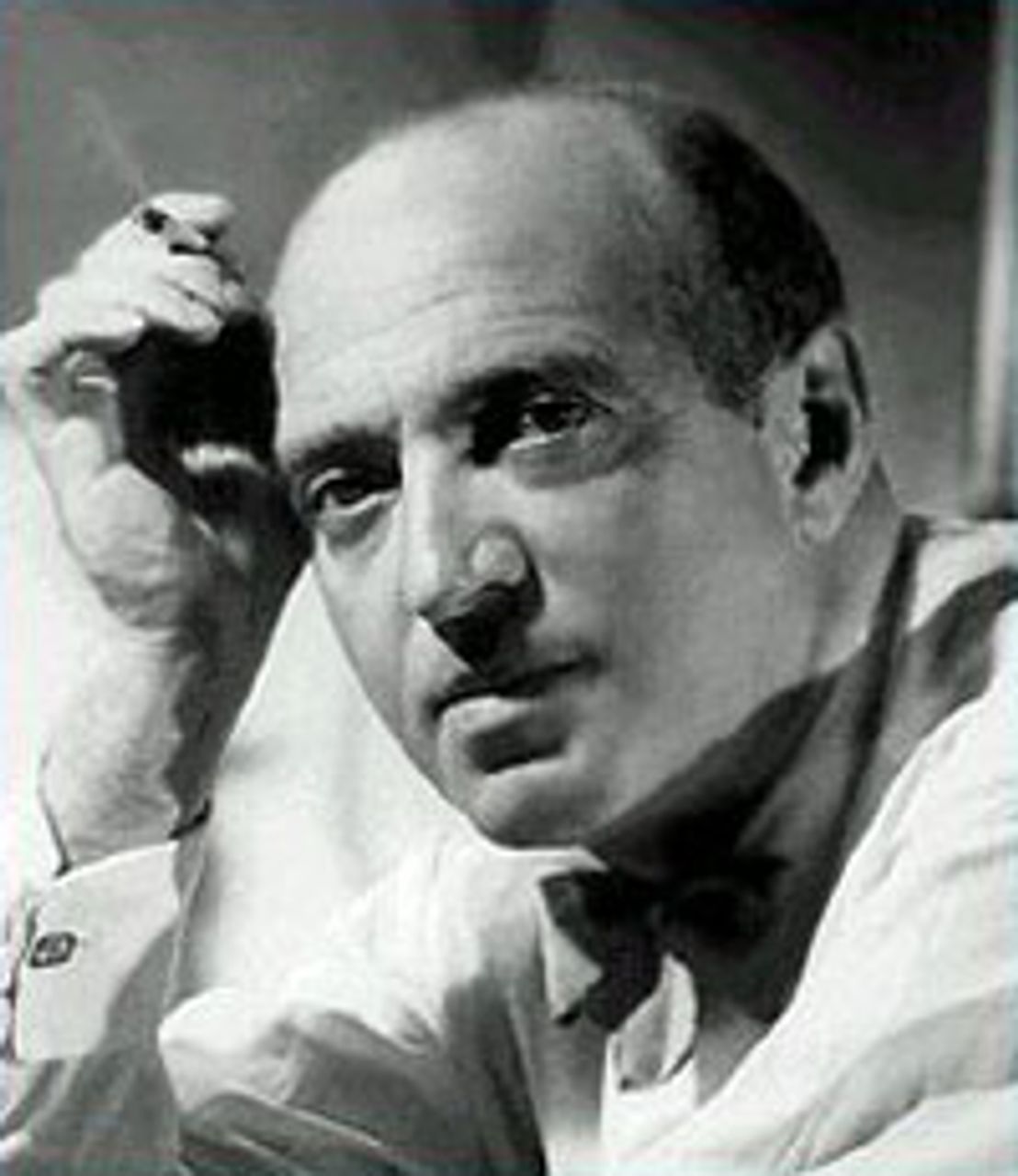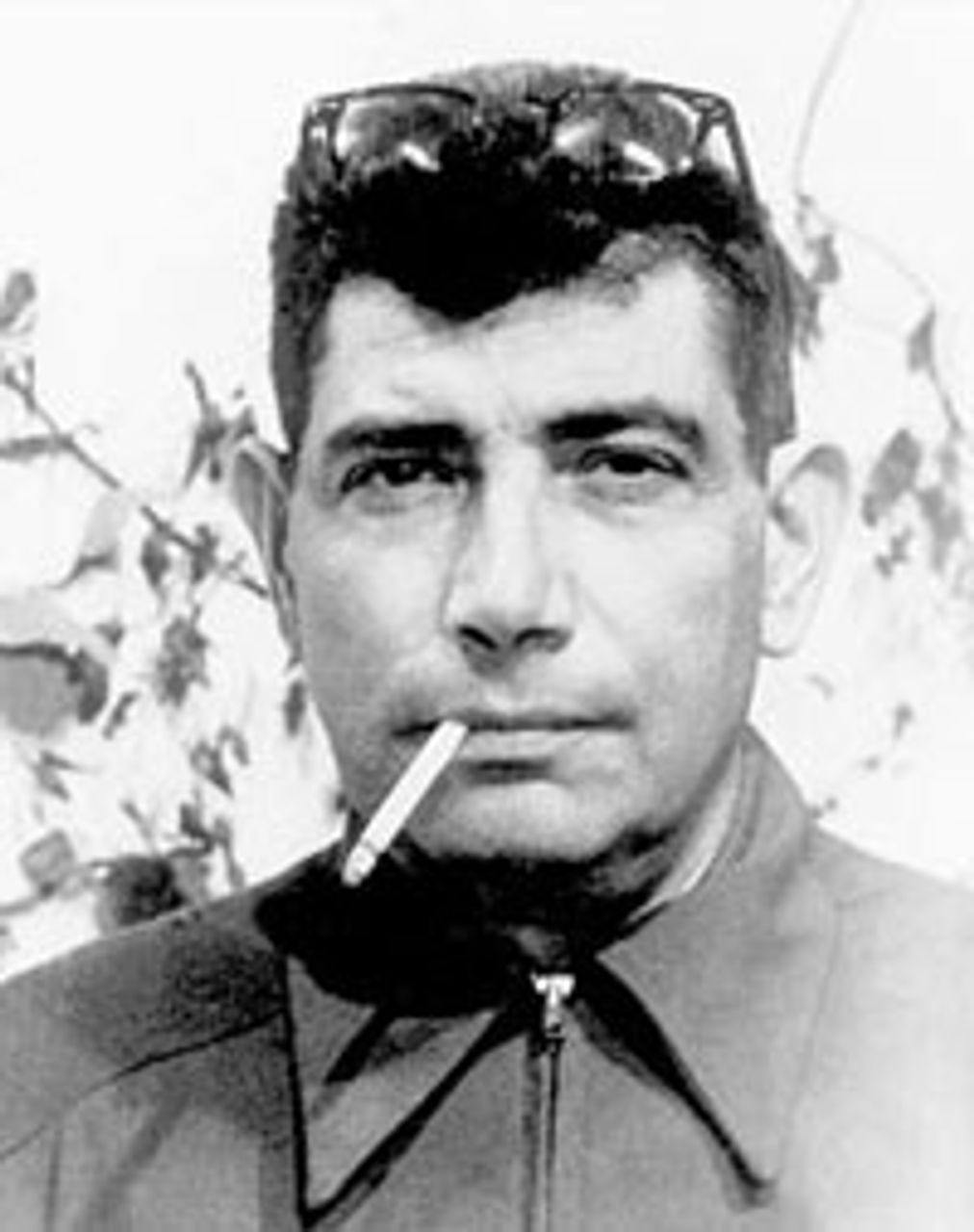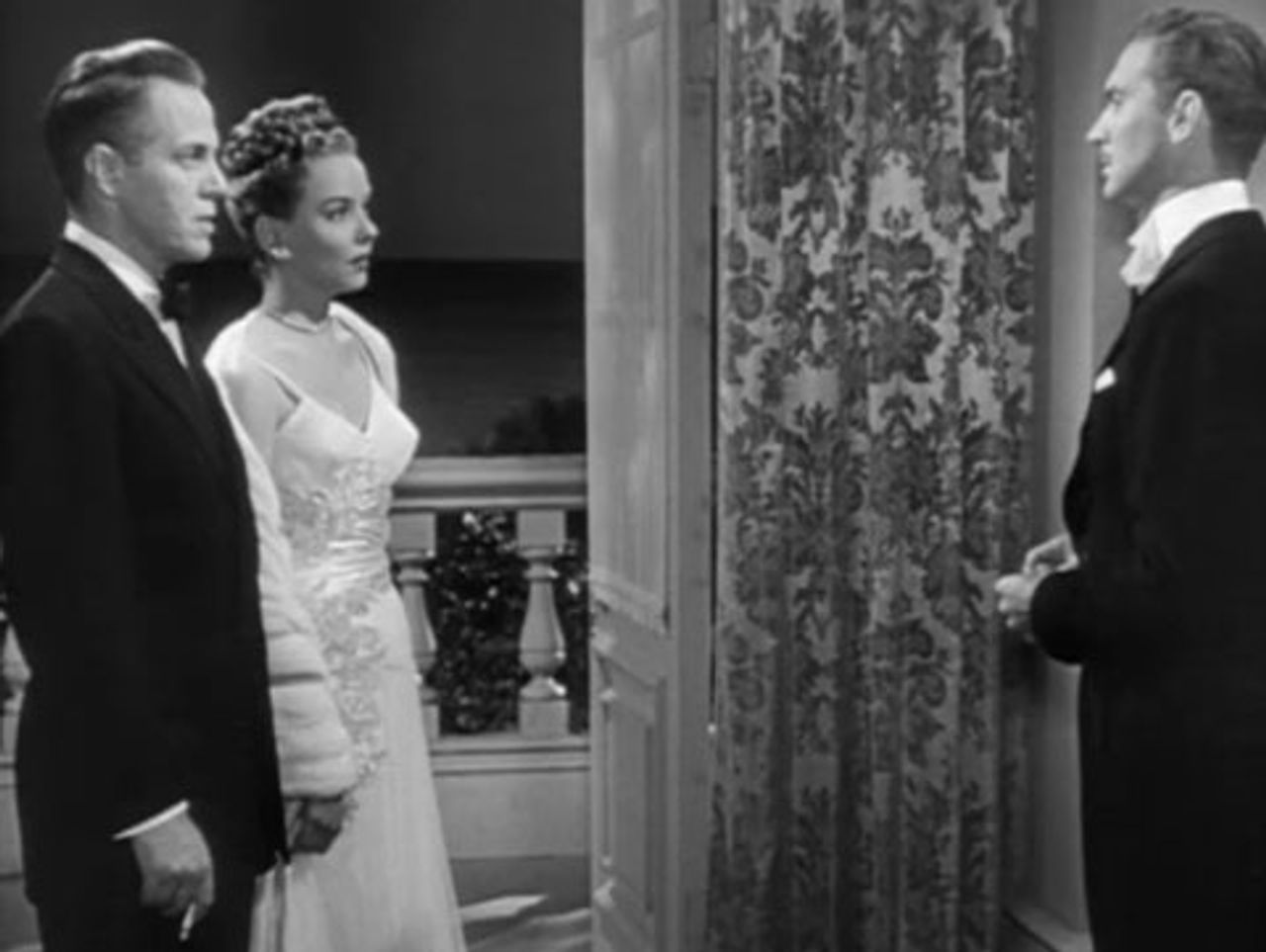Caught directed by Max Ophuls, screenplay by Arthur Laurents, based on the novel Wild Calendar by Libbie Block ; Ruthless directed by Edgar Ulmer, screenplay by Alvah Bessie, S.K. Lauren and Gordon Kahn, based on the novel Prelude to Night by Dayton Stoddart
The disheartening collection of new movies this summer prompted us to bring to the readers’ attention films from a different period in Hollywood’s history. Among others, Max Ophuls’s Caught and Edgar Ulmer’s Ruthless, made in the late 1940s, came to mind. Unlike most films today, both were created out of an intense spirit of opposition and contain elements of sharp social critique. They are an unusual blending of a high level of politics and artistry.
Scathing about American society, the films—like Orson Welles’s 1941 masterpiece, Citizen Kane (a source of inspiration for the two works)—offer complicated portraits, not crude caricatures, of powerful social figures. At the same time, that Kane set Welles up for attack was a warning about how seriously the American ruling elite would take efforts by Hollywood filmmakers to reveal its dirty secrets.
Caught and Ruthless were not unique at the time in their hostility to big businessmen and profiteers. Despite illusions about the Second World War, many filmmakers instinctively understood that the so-called war for democracy had not settled the questions of dictatorship and inequality, including (or perhaps especially) in the US, and felt an urgency to warn about the dangers.
There was a general sense in more-thoughtful artistic circles that ordinary people had made great sacrifices during the war, but that a shadowy, sinister few, not so dissimilar to the types who had backed authoritarian regimes in Europe, stood principally to benefit from the new circumstances.
Besides Citizen Kane, there were other Welles films, such as The Stranger (1946) and Lady from Shanghai (1947), as well as Abraham Polonsky’s Force of Evil (1948), to name a few. If the more astute filmmakers did not have an all-rounded understanding of the contradictions of the postwar world and were—in many ways—unprepared for what was to come, they did exhibit an intuition about the false pretensions of “American democracy.”
Caught (1949)
German-born Max Ophuls (1902-1957) fled the Nazis and arrived in America from France in 1941. Despite a rich history in theater and having directed films in France, Italy and Holland, he was not immediately accepted in Hollywood. Indeed, he was unemployed for six years before writer-director Preston Sturges intervened on his behalf.
 Caught
CaughtOphuls was hired to work on Vendetta in 1946 for Howard Hughes’s production company, an unhappy experience that included undergoing ridicule at the hands of the deranged mogul. Fired by Hughes after only a few days on the set, Ophuls was eventually able to make four pictures in Hollywood; Caught is the third.
Ostensibly adapting the Libbie Block novel Wild Calendar, Ophuls and screenwriter Arthur Laurents in fact loosely based their movie on Hughes, much the same way William Randolph Hearst served as the model for Citizen Kane.
In a cramped Los Angeles apartment, two young women are intently thumbing through a fashion magazine in the movie’s opening sequence. The camera turns from the clothing on the glossy publication’s pages to the faces of the women fantasizing about a future without financial worries.
Leonora Eames (Barbara Bel Geddes), from a poor family in Denver, scrapes by working as a carhop. She and her roommate calculate that if she skimps, she can save enough money to go to modeling school. Leonora wants to return home with mink coats for both herself and her mother.
After charm school, the closest Leonora comes to a fur coat is modeling one for a department store’s wealthy clientele. But an invitation to a party on board the yacht of millionaire Smith Ohlrig (Robert Ryan) changes things. “He’s the ‘Wall’ of Wall Street,” says her friend, who sees attending the function “as an investment.” One thing leads to another and, ultimately, Smith and Leonora are married, generating headlines about “Cinderella” getting her man.
The marriage is largely a loveless affair, and the move from a mansion in Los Angeles to another on Long Island only aggravates Leonora’s alienation. Living in luxury requires that the new bride, as Smith’s highest paid employee, must report for duty whenever her husband summons her, which occurs generally through the offices of his German gofer Franzi (wonderfully played by Curt Bois), another of Smith’s victims.
Finally, no longer able to abide her sadistic husband, Leonora exchanges her luxurious trappings for a small New York apartment (“Nobody is poor by choice”). She lands work as a secretary in an East Side doctors’ office that ministers to the lower classes. But old values and longings die hard, and she comes into conflict with one of her bosses, Dr. Larry Quinada (James Mason), for suggesting to the daughter of a patient that she should go to charm school in order to talk well, walk well and marry well.
Smith’s egotistical pursuit of Leonora and his intimidations tragically result in a miscarriage. Leonora, with Larry’s love and support, finally breaks free from Smith, his world and her materialistic beliefs, symbolized by the discarding of the heroine’s fur coat in the movie’s final moment.
 Max Ophuls
Max OphulsWhile Ophuls himself admitted that the film’s ending was a bit soft, Jean-Luc Godard, then a critic, called it “Max’s best American film.” Caught argues that the very rich are pathological, trapped in a society that destroys their spirit and compassion; that those in search of limitless material wealth are psychologically damaged, driven as they are by bogus notions of the American dream; that, in reality, the more money they accumulate, the more miserable they become.
Caught is artistically accomplished. Ophuls’s stunningly beautiful black-and-white imagery is aided by the fluid camerawork of the renowned Lee Garmes. The director’s trademark crane shots and constantly moving camera enhance the extraordinary performances of his three leads, generating razor-edged dramatic moments.
The camera sees everything, is interested in everything—from the scenes in the doctors’ waiting room to the activity on the streets and stores that Leonora and Larry pass by. It warns of danger when Leonora stands at the top of the imposing staircase in the Long Island mansion and the camera is a participant, through a back-and-forth motion, in a key conversation between Larry and his older associate. Moreover, it captures all the nuances and texture of Smith Ohlrig’s terrifying personality.
Of Ophuls, critic Andrew Sarris commented: “[H]e gave camera movement its finest hours in the history of cinema…. The main point is that Ophuls is much more than the sum of all his camera movements. What elementary aestheticians overlook in Ophuls is the preciseness of his sensibility…. This is the ultimate meaning of Ophulsian camera movement: time has no stop. Montage tends to suspend time in the limbo of abstract images, but the moving camera records inexorably the passage of time, moment by moment.”
This inexorable recording of the “passage of time” is on display throughout Caught. The “moment by moment” motion of the camera is most striking in the scene in which Larry proposes to Leonora in a nightclub. It continuously rotates around their embracing bodies, packed in with others on a crowded dance floor. Conspicuously, a black band performs.
Ophuls is chronicling the emotional progression of his characters and simultaneously letting us know that it is within the population at large, not the great figures and “celebrities,” that the real heartbeat of humanity exists. Conversely, the film argues that nothing important can be found within the cold walls of a palatial estate with its stifled inhabitants.
About the power of film, Ophuls remarked that cinema had given birth to “a new kind of tension which, I believe, has never existed before in any of the other forms of dramatic expression…in films the words, the technology and the technique and the logic of the visible must be secondary to the image, subordinate to the vision containing the untold wonders within it, which, in the cinema can be the bearer of artistic truth.”
Ruthless (1948)
 Edgar Ulmer
Edgar UlmerEdgar Ulmer (1904-1972) was born in what is now the Czech Republic. As a young man, he lived in Vienna and later served his apprenticeship with the legendary filmmaker F.W. Murnau (Nosferatu, Tabu), with whom he first came to Hollywood in 1926. Although Ulmer worked with other well-know auteurs such as Robert Siodmak, Billy Wilder and Fred Zinnemann, he was largely consigned to Hollywood’s fringes.
Best known for The Black Cat (1934) and the film noir classic Detour (1945), Ulmer was seen as the American film industry’s Poverty Row magician, or as Sarris noted, the “French call him un cinéaste maudit [accursed director].” Sarris describes Ulmer as “one of the minor glories of the cinema. Here is a career, more subterranean than most, which bears the signature of a genuine artist…. That a personal style could emerge from the lowest depths of Poverty Row is a tribute to a director without alibis.”
By his own calculations, Ulmer made more than 127 films, and once said, “I really am looking for absolution for all the things I had to do for money’s sake.” His daughter Arianne described her father as a workaholic who had an “an enormous capacity for joy, anger, humor and sensuality.”
Ruthless is perhaps Ulmer’s chef-d’oeuvre. With a Dreiser-like storyline, the movie tracks the rise and fall of Horace Woodruff Vendig (Zachary Scott). Through extensive flashbacks, the movie shows how Vendig claws his way to the top of the financial heap over the bones of his rivals, as well as those who love him.
 Ruthless
RuthlessGrowing up in humble circumstances, he is taken under the wing of the well-to-do Burnside family and promises himself to their daughter Martha (Diana Lynn), whom he has stolen away from his closest childhood friend Vic (Louis Hayward). After he gets into Harvard, he drops Martha (“I’m going fast and alone”), and takes up with socialite Susan Duane (Martha Vickers), prominent on the social register. It is she who convinces Vendig that Wall Street is where the real money is to be made.
After lying and finagling his way to success, he goes after the empire of Buck Mansfield (Sydney Greenstreet) by seducing Buck’s beloved wife, Christa (Lucille Bremer), in order to obtain insider information. “From the first moment,” Christa later tells Vendig, “you weren’t kissing me, you were kissing 48 percent” of Buck’s company.
In Ruthless’s final scenes, a ruined Mansfield accuses Vendig: “Animals kill for food or love. You and I spoil the jungle because we kill for profit, a taste of victory and revenge. Then we destroy each other after.” After Vendig’s comeuppance, a character observes memorably, “He wasn’t a man. He was a way of life,” a statement that defines Ulmer’s attitude toward his protagonist.
This “way of life” is clearly big business, capitalism, shown to be exploitive and ultimately self-destructive. Ulmer’s visually concise film passes moral judgment on relentless ambition and greed, and is irreconcilably opposed to those who destroy for profit.
In an interview with French filmmaker Bertrand Tavernier, Ulmer half-jokingly claimed that Ruthless’s moral was: “You will be destroyed: hell casts the rich into the water and you will be drowned.”
Both Caught and Ruthless are magnificent, engrossing works. It was a great pleasure, for a change, to be immersed in films with serious ideas and aesthetics. Ophuls and Ulmer both had a strong sense of history and society that helped orient their films. They were not simply taking shots in the dark, like so many filmmakers today.
Film is a powerful and profoundly social medium that reaches a mass audience. Its greatest achievements almost inevitably represent a danger, directly or indirectly, to the powers-that-be. The generally left-wing character of Caught and Ruthless helps explain why the Hollywood anticommunist purges took place. The latter were not primarily the product of paranoia and delusion. Writers and directors were producing works that threatened to undermine the myths that the American establishment considered essential for its political and social security.
In fact, Alvah Bessie, one of the scriptwriters on Ruthless, was blacklisted and imprisoned in 1950 as a member of the Hollywood Ten. Director John Berry, another future blacklist victim, stood in for Ophuls briefly on Caught when the latter was ill. Future director Robert Aldrich, another left-wing figure, worked as associate director on the same film.
Both films are about Wall Street tycoons, and portray these financial parasites as authoritarian and even fascistic. Caught and Ruthless perhaps take on an additional layer of meaning under our present circumstances. Both deserve to be seen and seen again.
